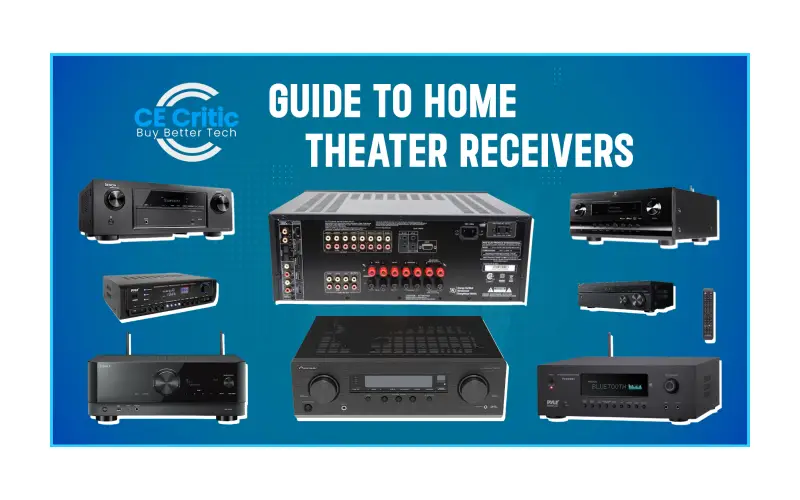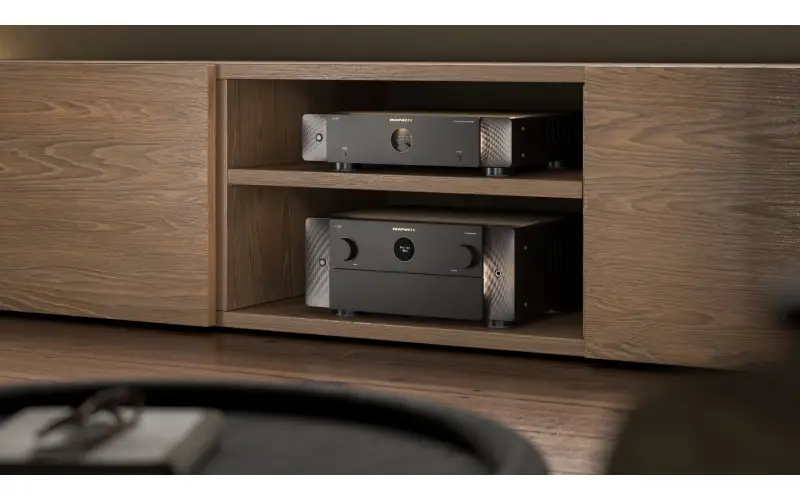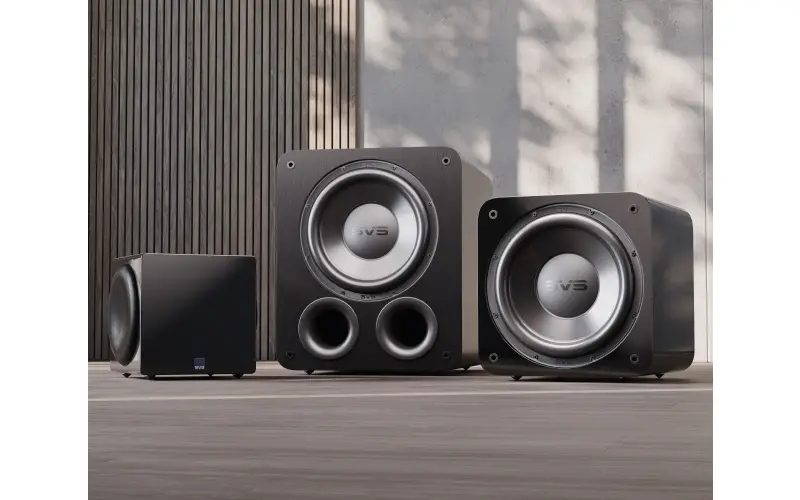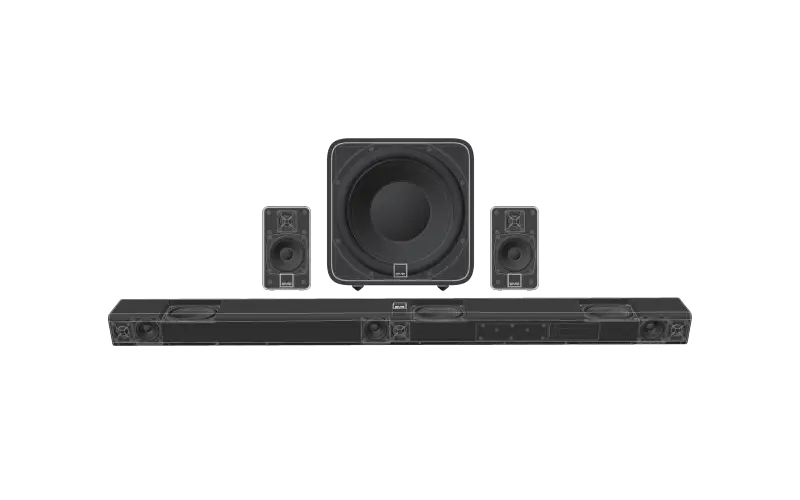By CE Critic - Buy Better Tech
Table of Contents:
- Introduction: What is a Home Theater Receiver and Why Do You Need One?
- Decoding the Specs: Key Features of AV Receivers
- Navigating the Channels: Understanding Channel Configurations
- Sound Matters: Essential Audio Formats and Technologies
- Connecting Your World: Essential Inputs and Outputs
- Future-Proofing Your Setup: The Latest Technologies to Consider
- Choosing the Right Receiver: Matching Features to Your Needs
- Conclusion: Elevate Your Home Theater Experience
Introduction: What is a Home Theater Receiver and Why Do You Need One?
Imagine a central command center for your home entertainment system, effortlessly orchestrating the flow of audio and video between your devices. That's the magic of a home theater receiver (AVR). It's the unsung hero that takes your TV, Blu-ray player, gaming console, and streaming services, and weaves them into a seamless, immersive experience.
Whether you're a movie buff, a gaming enthusiast, or simply enjoy high-quality sound, an AVR can significantly elevate your home theater setup. This guide will equip you with the knowledge to navigate the world of AVRs, understand their features, and choose the perfect one for your needs.
Decoding the Specs: Key Features of AV Receivers
- Number of Channels: This refers to the speaker configuration supported by the receiver, ranging from basic 2.0 (stereo) to immersive 9.2 setups.
- Power Output: Measured in watts per channel, it determines the receiver's ability to drive your speakers and fill your room with sound.
- Surround Sound Formats: Dolby Atmos, DTS:X, and Auro 3D are popular formats creating realistic, 3D-like audio experiences.
- Connectivity: HDMI ports are crucial for connecting your devices, while Wi-Fi and Bluetooth enable wireless streaming.
- Video Processing: Upscaling capabilities enhance the resolution of lower-quality video sources, ensuring smooth visuals on your modern TV.
- Smart Features: Some AVRs integrate streaming services, voice control assistants, and multi-room audio capabilities.
AV (Audio/Video) Receivers:
AV receivers are the most common type of home theater receivers and are designed to handle both audio and video signals. They typically come with multiple HDMI inputs and outputs, allowing you to connect various video sources, such as Blu-ray players, gaming consoles, and streaming devices, to your TV. AV receivers also include multiple audio inputs, such as analog, digital, and HDMI, to connect your audio sources like CD players, media players, and gaming consoles. They offer built-in amplification to power your speakers and usually come with advanced audio processing features like Dolby Atmos, DTS:X, and room correction technologies for optimized sound performance. AV receivers are suitable for most home theater setups and provide comprehensive connectivity and audio processing options.
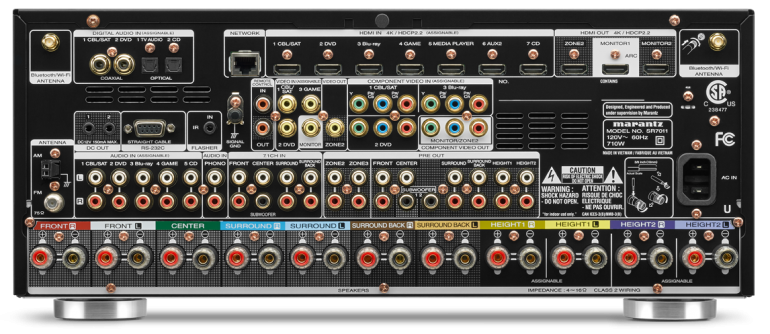
Stereo Receivers:
As the name suggests, stereo receivers are designed for two-channel audio playback, typically used for music listening or small home theater setups with only two speakers. They come with analog inputs and outputs for connecting audio sources, and often include built-in amplification for powering two speakers. Stereo receivers are simpler in terms of features compared to AV receivers, as they focus primarily on delivering high-quality stereo sound. They are ideal for audiophiles or those who prioritize music listening and do not require multi-channel audio processing or video connectivity.
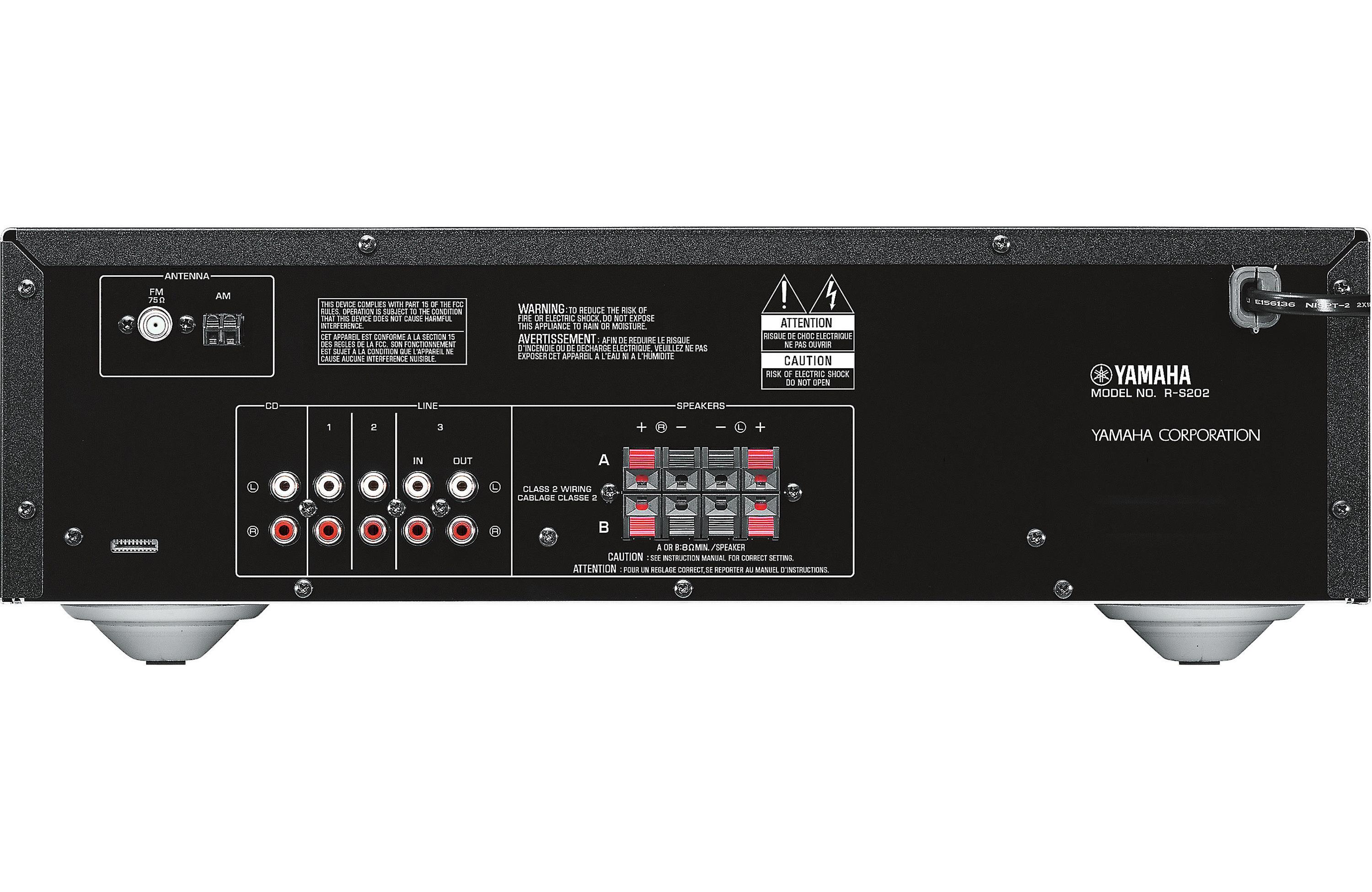
Soundbar/All-in-One System Receivers:
Soundbars and all-in-one home theater systems are becoming increasingly popular due to their sleek design and ease of setup. These systems often come with a built-in receiver that includes an amplifier, audio processing features, and sometimes video connectivity options. Soundbar receivers are typically designed for compact setups and are suitable for smaller rooms or spaces where a full-fledged AV receiver may not be practical. They are ideal for those who want a simple and streamlined home theater setup with fewer components.
Preamp/Processor and Power Amp Separates:
Preamp/processor and power amp separates are high-end options for advanced home theater setups where customization and performance are top priorities. Preamp/processor units are designed to handle audio processing, such as decoding of advanced audio formats and room correction, while power amps are dedicated to amplifying the audio signals and driving the speakers. These separates offer flexibility in terms of customization and performance, allowing you to choose and upgrade different components independently to suit your preferences and requirements. However, they can be complex to set up and may require additional components and cables.
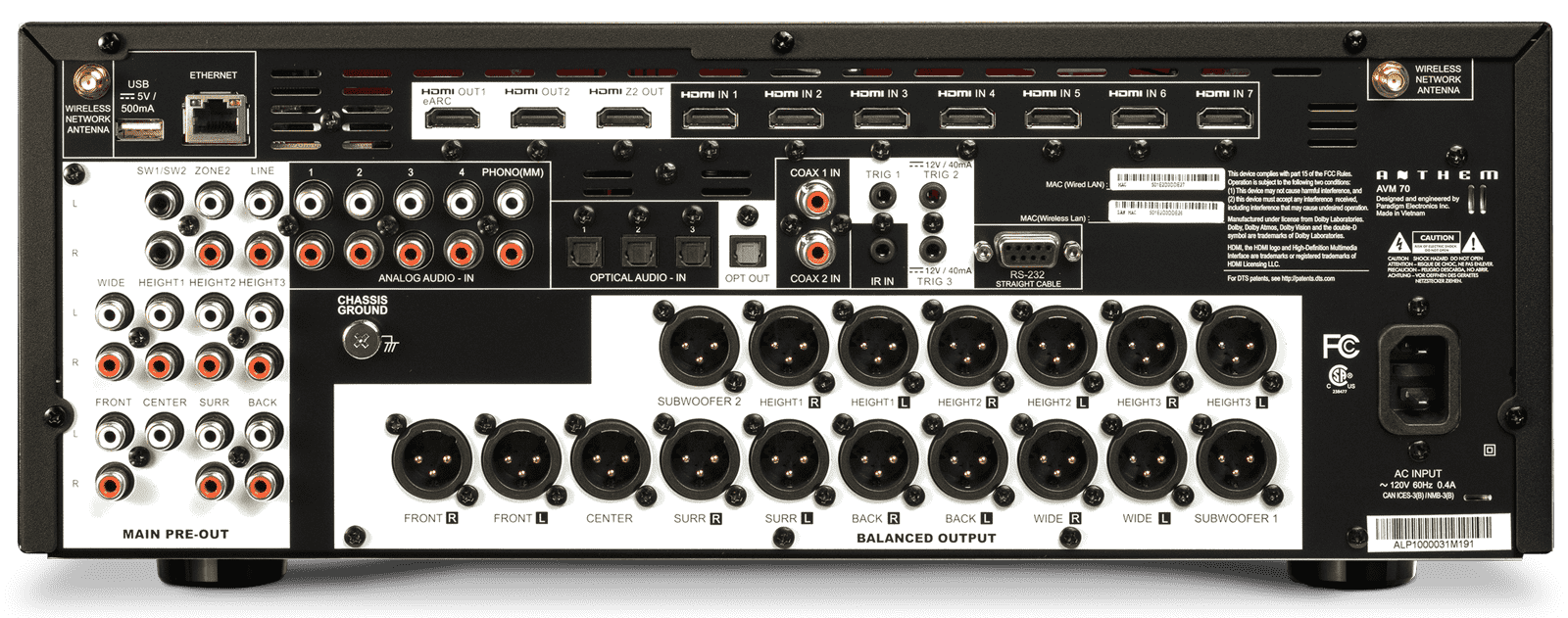
Network Receivers:
Network receivers are gaining popularity as they provide advanced connectivity options for streaming music and media from various online sources. These receivers often come with built-in Wi-Fi, Bluetooth, and Ethernet connectivity, allowing you to connect to your home network and stream music from services like Spotify, Tidal, and Pandora, or access content from DLNA-enabled devices. Network receivers may also offer integration with smart home systems, voice control options, and multi-room audio capabilities, making them a convenient choice for those who prioritize streaming and digital media.
Navigating the Channels: Understanding Channel Configurations
The number of channels in an AVR's name indicates the speaker layout it supports. Here's a breakdown:
- 5.1: The standard surround sound setup with five speakers (left, right, center, surround left/right) and a subwoofer for bass.
- 7.1: Adds two rear surround speakers for a more enveloping sound experience.
- 9.1/9.2: Incorporates additional channels for height or width speakers, further enhancing immersion.
Sound Matters: Essential Audio Formats and Technologies
- Dolby Atmos and DTS:X: These object-based formats create a more immersive soundscape by placing sounds in specific locations around the listener.
- Dolby TrueHD and DTS-HD Master Audio: High-resolution audio codecs that deliver superior sound quality compared to standard formats.
- Room Correction: Technologies like DIRAC, Audyssey, and YPAO analyze your room acoustics and adjust the sound for optimal performance.
Connecting Your World: Essential Inputs and Outputs
- HDMI: The standard interface for connecting modern TVs, Blu-ray players, streaming devices, and gaming consoles.
- Optical and Coaxial Inputs: For connecting older devices that lack HDMI ports.
- Speaker Terminals: Where you connect your speakers to the receiver.
- Subwoofer Output: Dedicated connection for your subwoofer.
Future-Proofing Your Setup: The Latest Technologies to Consider
- HDMI 2.1: Supports high-resolution formats like 8K and 4K at 120Hz for future-proof gaming and video experiences.
- eARC: Enhanced Audio Return Channel allows lossless audio transmission from your TV to the receiver.
- HDR10+ and Dolby Vision: High Dynamic Range formats that deliver wider ranges of brightness and contrast for stunning visuals.
Choosing the Right Receiver: Matching Features to Your Needs
Consider these factors when selecting an AVR:
- Budget: AVRs range from affordable to high-end models. Determine your budget and prioritize features that matter most to you.
- Room Size and Speaker Setup: Choose an AVR that supports your desired speaker configuration and has enough power to fill your room.
- Content You Consume: If you primarily watch movies or play games, prioritize immersive audio formats like Dolby Atmos and DTS:X.
- Futureproofing: Consider features like HDMI 2.1 and the latest video processing technologies if you plan to upgrade your devices in the future.
Conclusion: Elevate Your Home Theater Experience
With a well-chosen AVR, your home theater transforms into a captivating entertainment hub. By understanding the key features and matching them with your needs you can make an informed decision when building or upgrading your home theater system.
